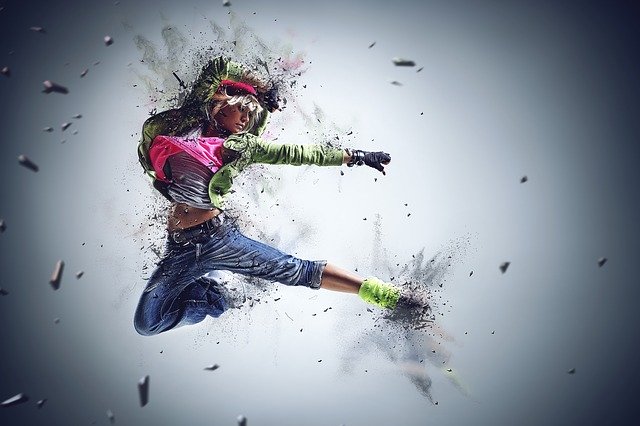Why do we dance? African-American social dances started as a way for enslaved Africans to keep cultural traditions alive and retain a sense of inner freedom. They remain an affirmation of identity and independence. In this electric demonstration, packed with live performances, choreographer, educator and TED Fellow Camille A. Brown explores what happens when communities let loose and express themselves by dancing together
.
Watch:
Glossary
- to enslave – to make a slave of someone
- let loose – to allow (someone or something) to move or go freely; to set free
- to emerge – to become apparent or prominent
- to bubble up – to rise to the surface or become obvious
- to spread like wildfire – to spread with great speed
- a strip – a piece
- to slap – to hit someone or something with the flat part of the hand
- to shuffle – to move by sliding along or back and forth without lifting
- to pat – to strike lightly or gently e.g. with the palm of the hand
- ban – a prohibition
- captivity – the state of being imprisoned or confined
- subversive – tending or intending to overthrow, destroy an established system or a set of beliefs
- tight-knit – bound together by strong relationships and common interests
- to permeate – to spread or flow throughout; pervade
- to blur – if a thing blurs, or if something blurs it, it becomes difficult to see it clearly, often because its edges are not clear
Discuss
- What is a social dance?
- How did slaves get around their owners` ban on drumming?
- What was the cakewalk about?
- Which dance blurred the boundaries between social groups?
- Why do we dance, according to the speaker?
Practice Makes Perfect
Fill in the gaps below with articles: a, an, the or “–“ (nothing).
The BOP is 1) ….. type of social dance. Dance is 2) …… language. It is 3) …… expression that emerges from 4) ….. community. It isn`t choreographed by any one person. It can`t be traced to any one moment. Each dance has steps that everyone can agree on but it`s about 5) …. individual and their creative identity. (…) Social dances spread like 6) ….. wildfire.(…) In African-American social dances we see over 200 years of how African and African American traditions influenced our history. 7) … present always contains 8) ….. past. 8) ….. past shapes who we are and who we will be.
ANSWERS: 1)a; 2) a; 3) an; 4) a; 5) the; 6) -; 7) the; 8) the
Answer the following questions
- How often do you dance? Do you like dancing? If yes, where?
- Do you sometimes refrain from dancing worrying you’d embarrass yourself?
- Have you ever danced in the streets e.g. at festivals?
- Why do we like to dance?
- What else can blur boundaries between social groups?
- Do you live in a tight-knit community/neighbourhood?
- What can spread like wildfire?
.
Explore it more to create your own teaching-learning experience!
Research Shows Your Company Should Consider Swapping Coffee Breaks for Dance Breaks.
Science suggests dancing on the job could offer significant employee health benefits.
Read:
Research-shows-your-company-should-consider-swapping-coffee-breaks-for-dance-breaks
(1117)





